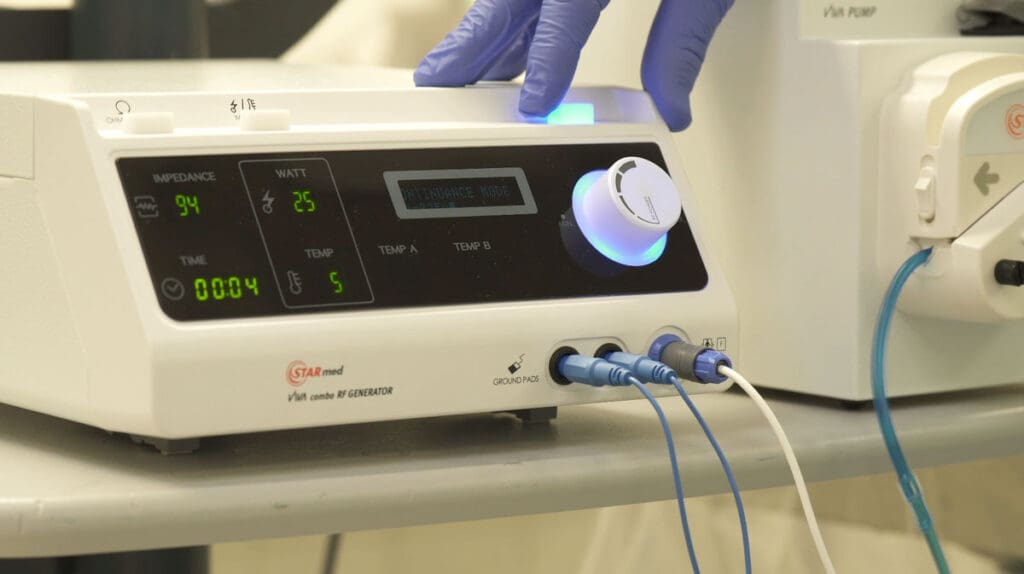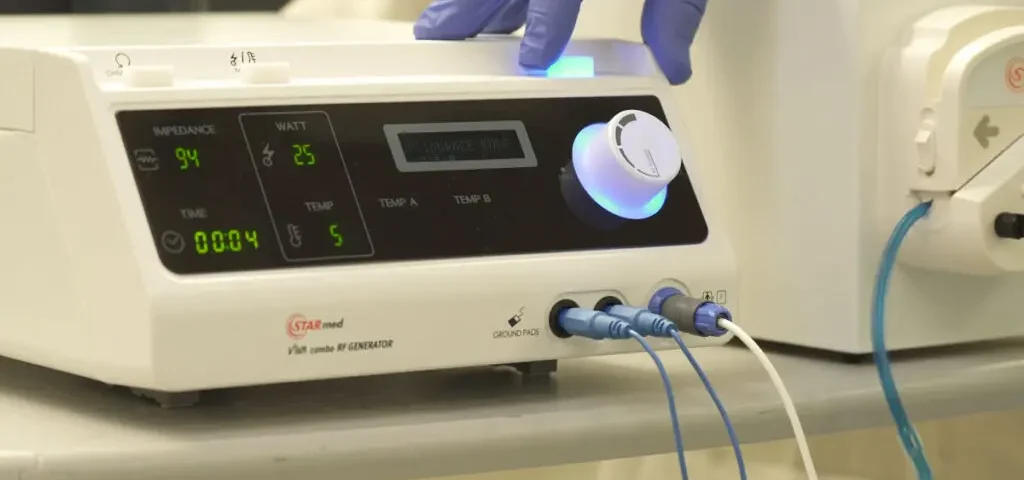
Concientización sobre el cáncer colorrectal
mayo 2, 2024
El alcohol y el riesgo de cáncer
mayo 24, 2024Thermal ablation helps avoid unnecessary invasive surgeries once used to treat benign lesions, like hysterectomies or thyroid resections. Thyroid and fibroid thermal ablation can be incision-free and use precise, controllable heat. The RF electrode is inserted directly into the fibroid or thyroid nodule to heat, shrink, and destroy lesions. Unlike traditional surgery, thermal ablation creates minimal risk of damaging healthy surrounding tissue and scarring.
Preserving healthy surrounding tissue helps maintain thyroid and uterine function, improving patients’ quality of life. Thyroid thermal ablation typically doesn’t alter the thyroid gland’s functionality—or has minimal impact. Fibroid ablation helps avoid destroying uterine tissue, potentially preserving tissue needed for optimal fertility.
Heat Ablation Reduces Risk of Complications
Thermal ablation’s non-invasive, non-scarring nature also offers minimal risk of complications. Patients do not have to undergo large incisions that inherently increase the risk of complications. In addition, thermal ablation procedures, like thyroid RFA, often don’t require any anesthesia.
Following a thermal ablation procedure, patients may experience minor bruising, swelling, or following ablation. However, potential side effects are often less severe than traditional surgery. It is rare for someone to experience severe bleeding, infection, and tissue damage after radiofrequency thermal ablation. However, misuse of thermal ablation technology can lead to complications like burns, cross-infection, ascites, and diarrhea.
Thermal Ablation Procedures Offer Quicker Recovery Time
Thermal ablation significantly decreases patient pain, scarring, and recovery time. After the procedure, patients are monitored like any other surgery. Pain management strategies are also enabled to help alleviate discomfort. However, unlike many invasive surgeries, thermal ablation is often an outpatient procedure. The non-invasive nature of thermal ablation also significantly reduces recovery time compared to traditional surgery.
During recovery, patients will still need to take pain medication as needed and avoid strenuous activities. However, because thermal ablation is better at preserving healthy surrounding tissues, it creates a shorter and less painful recovery time. This quick recovery helps improve the quality of life following an ablation procedure.
Thermal Ablation Devices Have High Efficacy in Thyroid and Fibroid Treatment

Clinical evidence shows thermal ablation is an effective way to treat thyroid nodules and uterine fibroids. When used in thyroid nodule treatment, ablation’s thermal heat helps shrink and destroy thyroid nodules caused by thyroid disease.
Observational studies show thyroid nodules had a median volume reduction rate (VRR) of 73% at 6 months and 76% at 12 months after radiofrequency ablation. The volume reduction rate (VRR) of non-functioning benign thyroid nodules (NFBTN) was 80% at 12 months and 95% at 60 months.
Radiofrequency ablation also helps treat painful noncancerous uterine fibroids. Fibroids can be debilitating and affect fertility. Ablation gives patients a chance to improve pain symptoms that affect their quality of life. It may also improve fertility and reduce patient risk of reproductive disorders.
Observational studies found fibroid radiofrequency ablation offered a VRR of up to 73.5% after 12 months. Thermal ablation also significantly reduced patient symptoms one month after the procedure.


